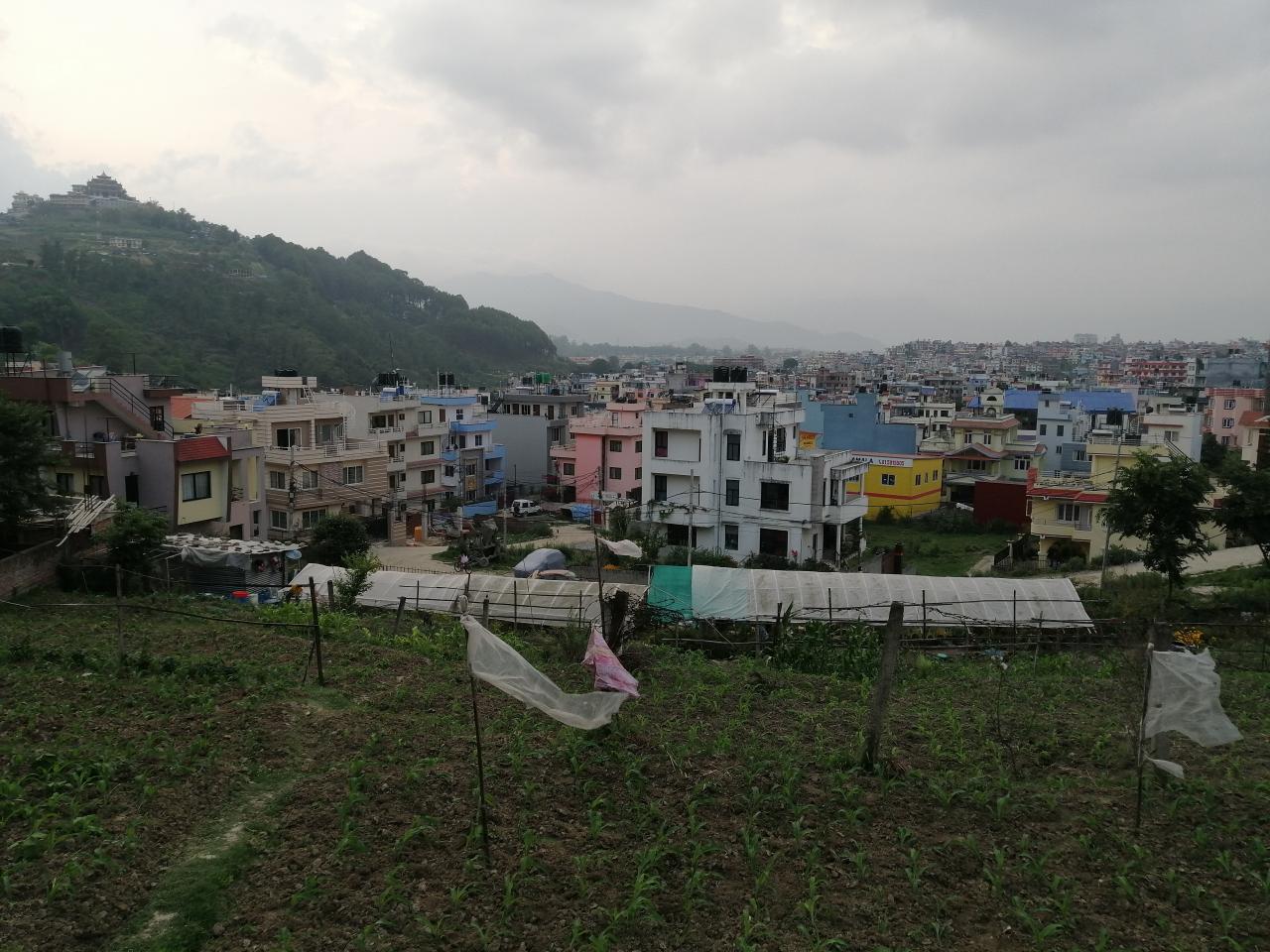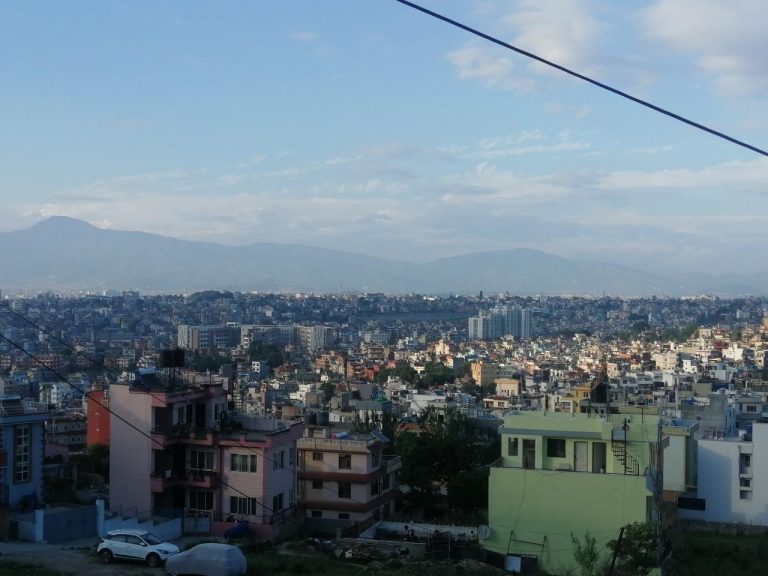
It was the 62nd day of the national lockdown – me, my wife, and my niece decided to notch up our evening walks – and explore the nearby Bagmati River near Chobhar Gorge. Our trail passed through different scenes, each evoking dfferent emotions and a myriad of thoughts on subjects like nature, urbanisation, human settlement and pollution.
Our trail began from the rapidly developing urban area of Nakkhu, we turn right along the boundary wall of Nepal Mediciti Hospital, a massive hospital project which boasts excellent medical facilities. Upendra Mahato, an NRN based in Russia, while explaining his vision behind the hospital said, he wished to curb the amount of people going to India for medical treatment – by building a facility of equal standard in Nepal itself.
The facility has been established – however, a criticism is that the cost of getting oneself cured at Nepal Mediciti Hospital could possibly be more than going to India.
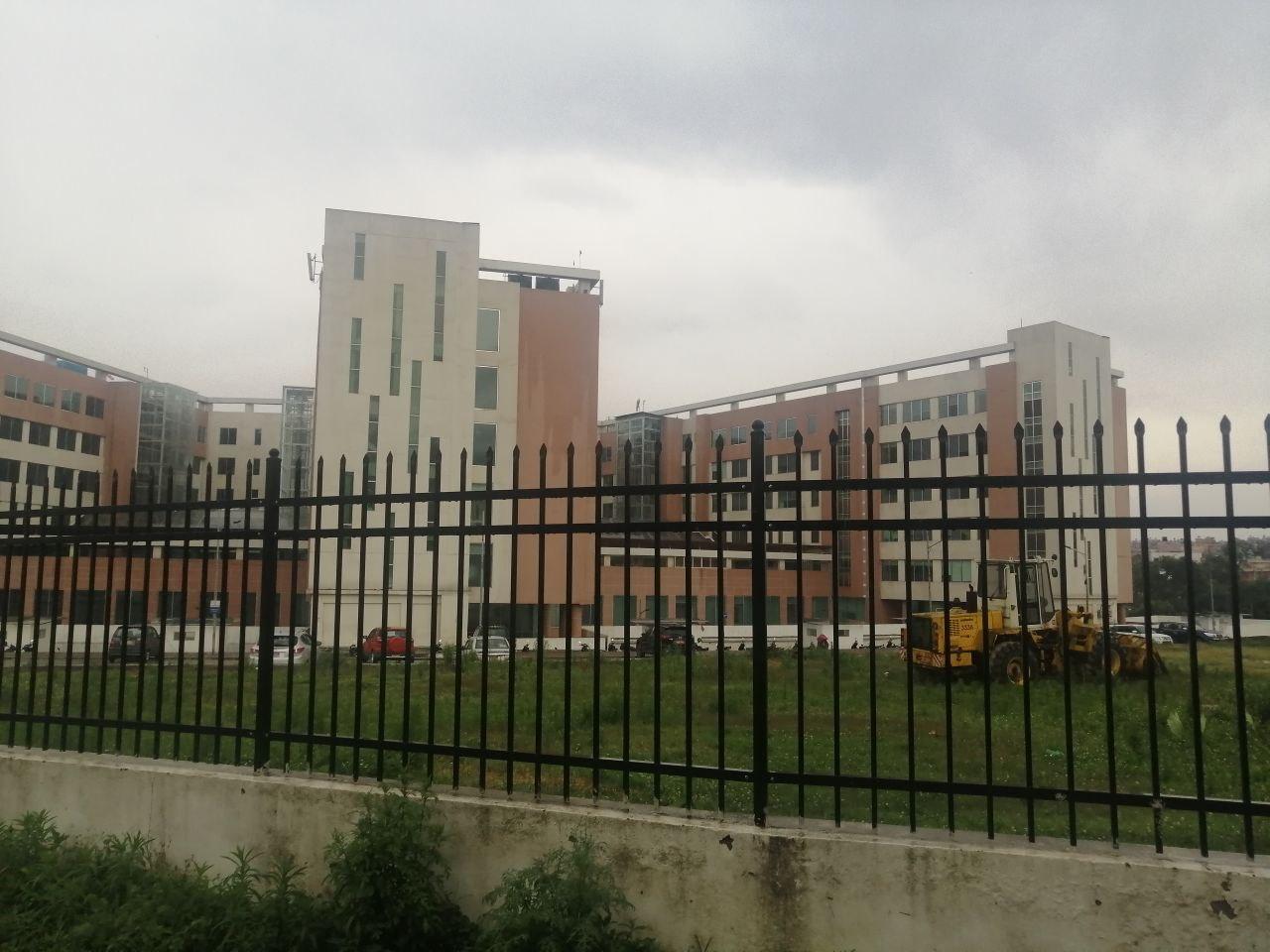
Therefore, the first thought I am faced with is the question of inequality regarding access to health care.
As we turn right, the landscape takes a different turn – buildings are sparse. However, new buildings are emerging, inlcuding a residential colony in the distance.
In the distance, Kathmandu Valley, a concrete jungle is visible which makes me wonder how much time before this area turns into a concrete jungle too.

Therefore, my second thought is urbanisation – and especially so because, the Chobhar Gorge which is in the distance has a mythological history. We will visit the myth below.
Following the trail leading out of Kathmandu Valley, a foul odour greets us – yes, we are near the Bagmati River. We reach a point where Bagmati River and Nakkhu River meet each other. We notice a lot of development activiites – a drainage system, new houses, and along side it cattle excretion, plastic and other pollution materials.
The stench is particularly strong we realise because we are wearing masks – a cumpulsory item during the COVID-19 crisis. However, while the nose is displeased, the eyes yield a different view. We see small hills, people gathered in small groups, and lush greenery.
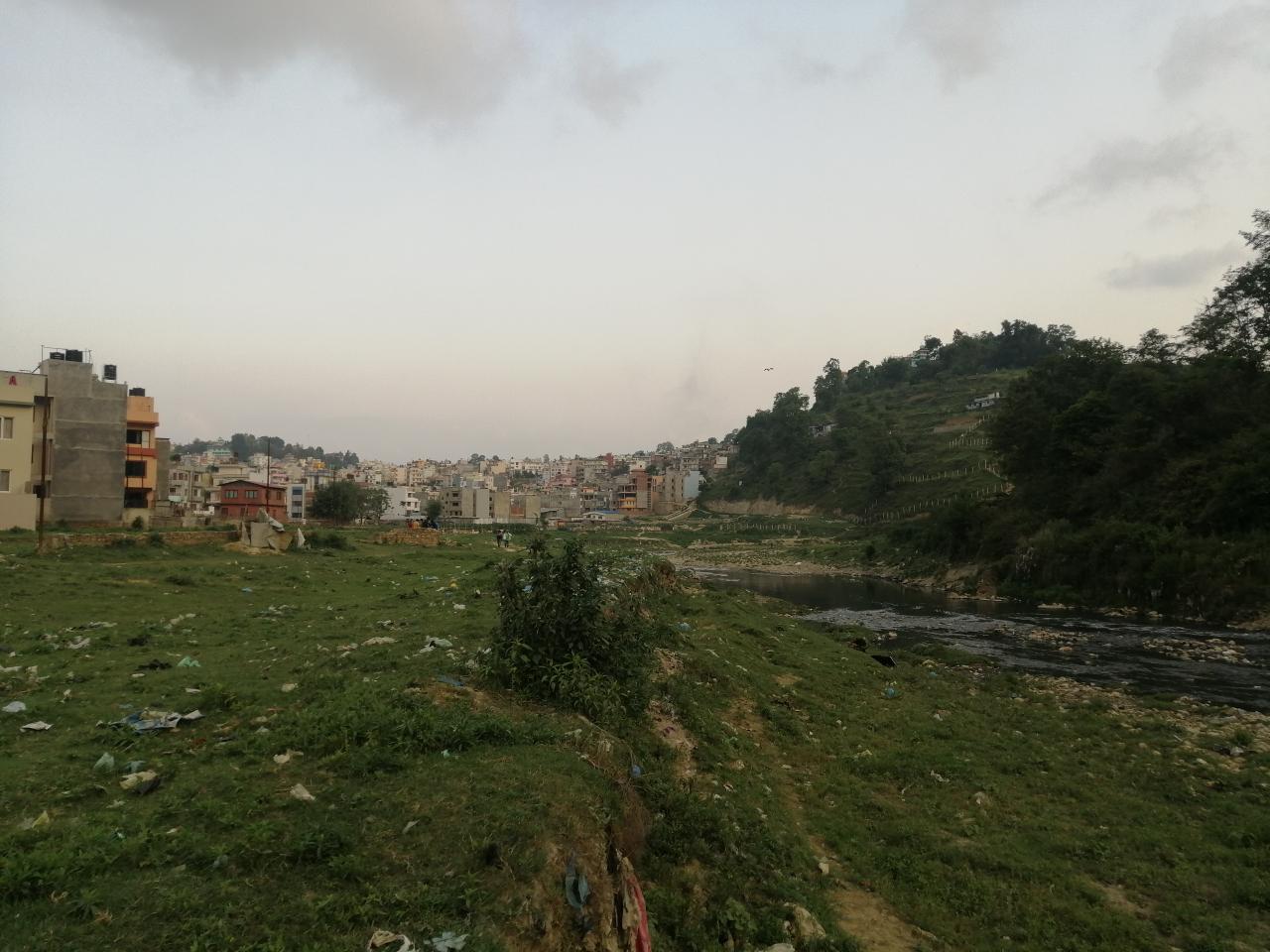
My third thought is of nature – the cost it has to pay towards human settlement, and if in the near future Kathmandu can balance between the two?
Following the trail, we have to climb a small hill – halfway from the top, we are greeted with a panoramic view of Kathmandu Valley.
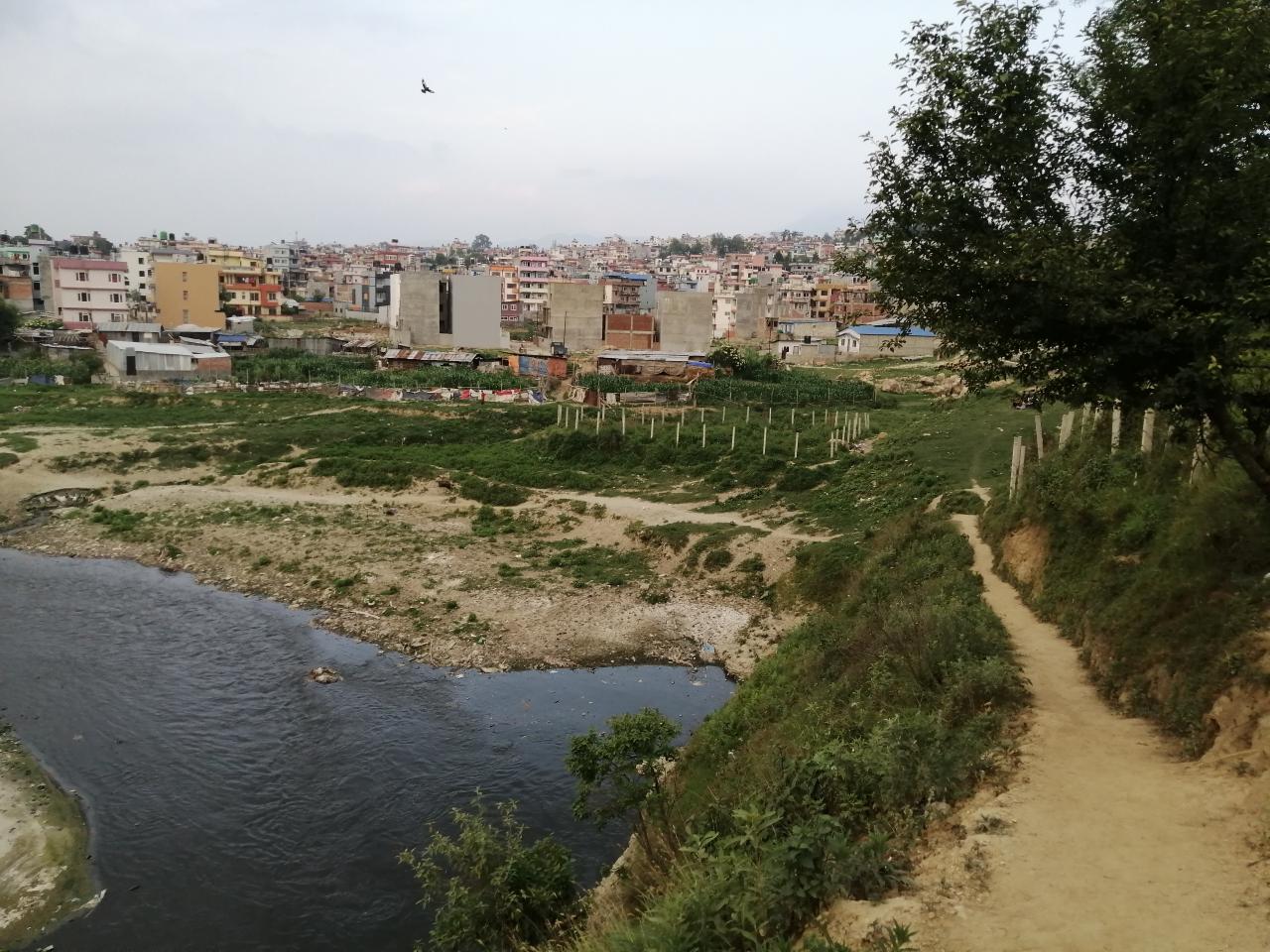
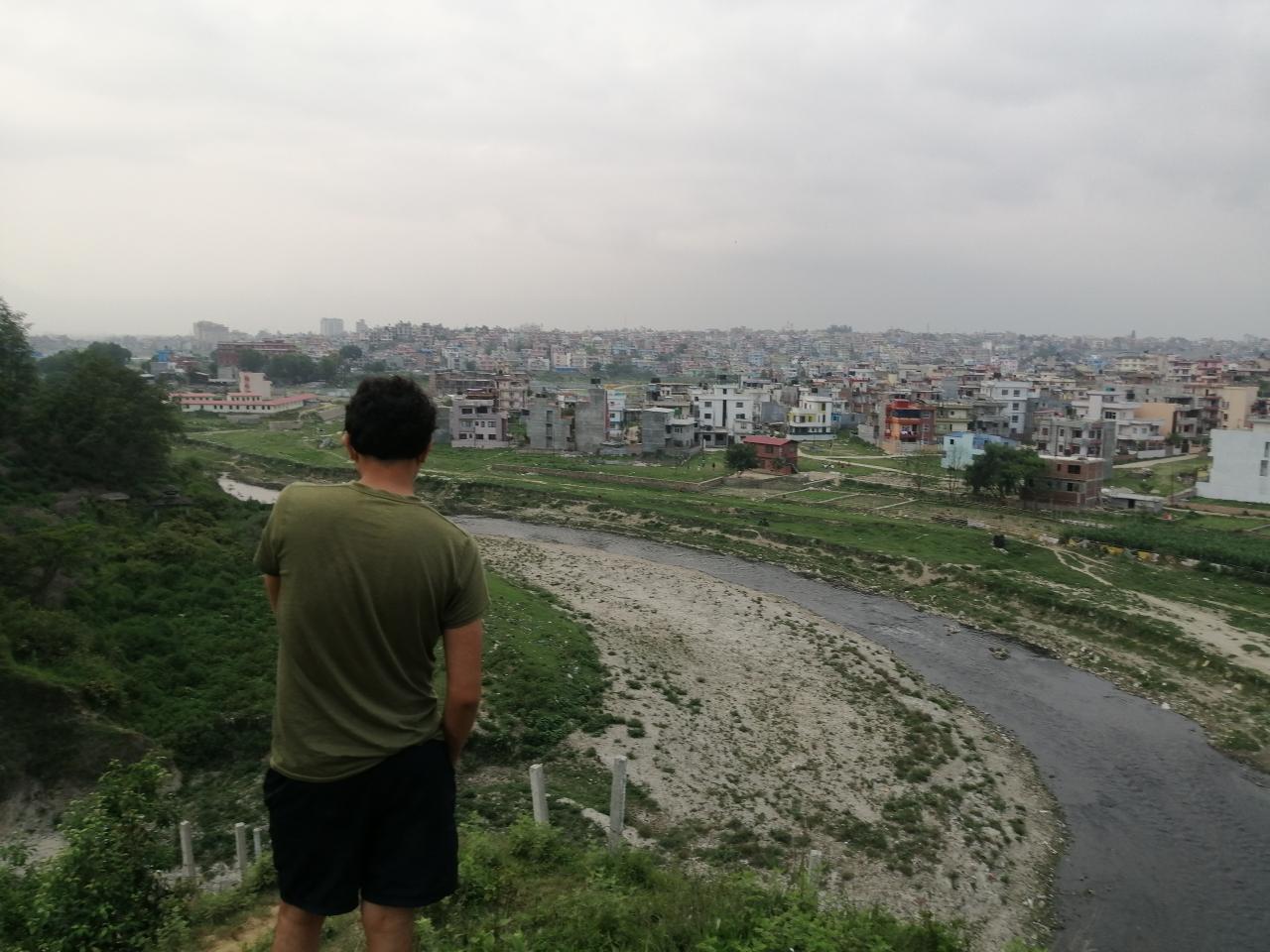
It is here, the Chobhar Gorge, to which the existence of Kathmandu is attributed to:
Myth: According to a legend, many eons ago, there used to be huge lake where modern day Kathmandu Valley lies. There used to be a huge emanating lotus in the middle of the lake. One day, Manjushree, a bodhisattva associated with prajna (insight) in Mahayana Buddhism who was visiting the area noticed the lotus, and wished to offer his prayers to the divine looking flower. He therefore drew his sword and cut a gorge through a hill to drain the water. The gorge drained the lake’s river, and thus Kathmandu Valley was formed. The place where Manjushree slashed the hill is the Chobhar Gorge.
Leaving the hilly trail, we arrive near Bhaisepati area, and follow the main road back to Nakkhu.
